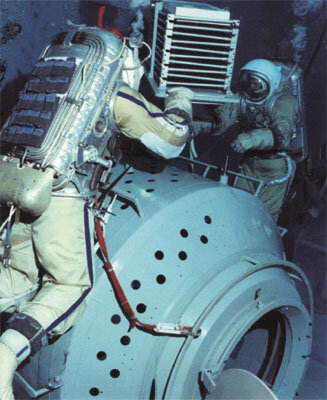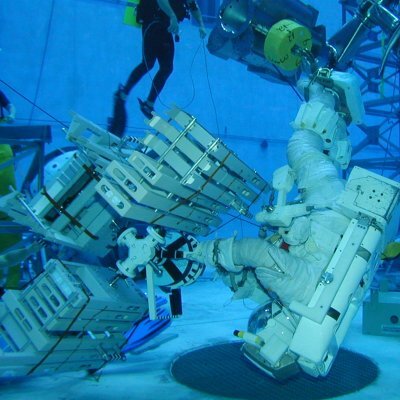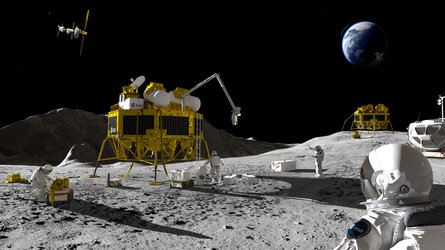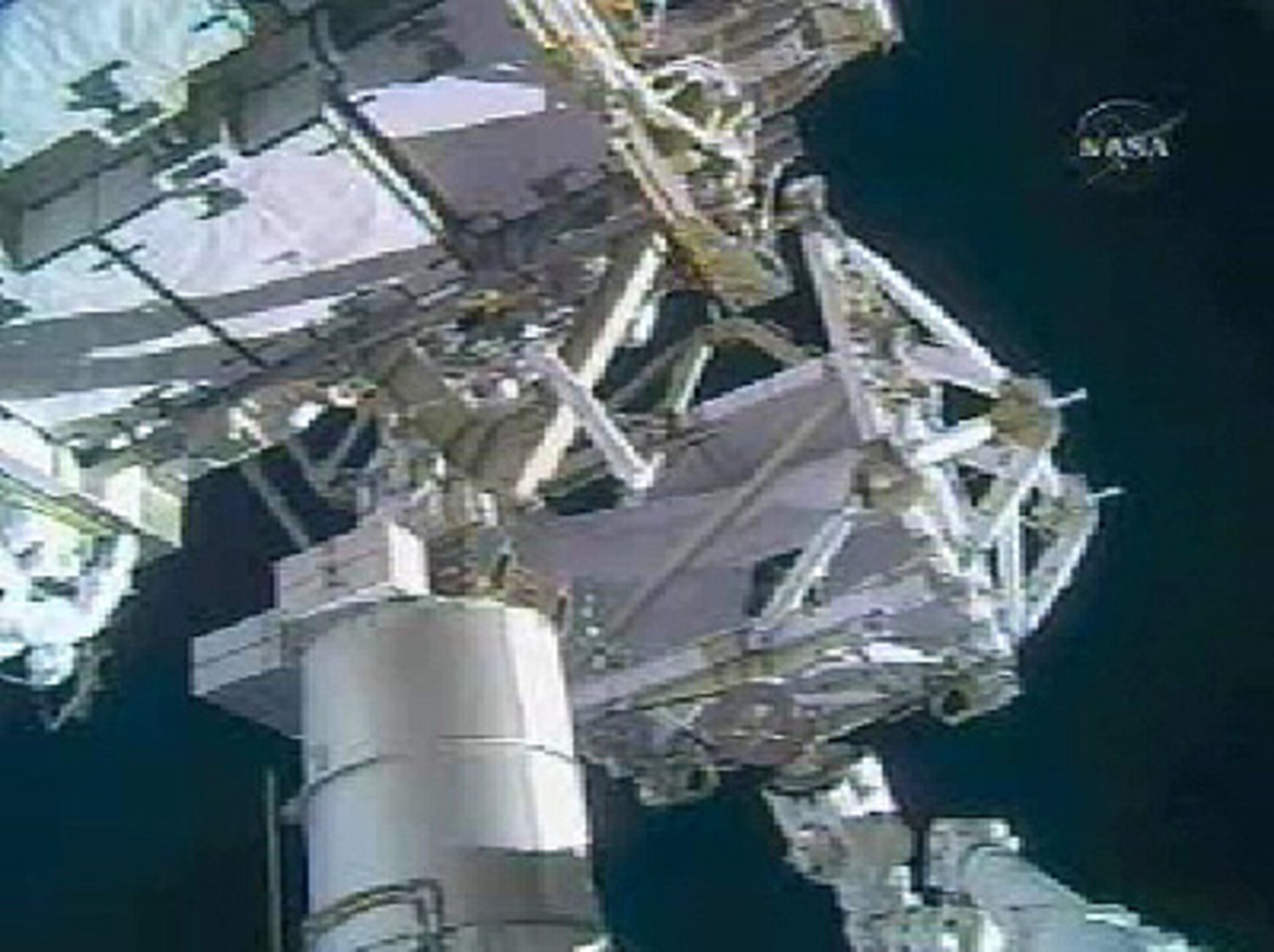EVA – Not exactly a walk in space
The media often refer to an EVA or extravehicular activity as 'a walk in space'. For an astronaut, however, carrying out extravehicular activity is a bit more than just a walk. It is hard work carried out in extreme conditions with more than an element of danger.
Working outside a spacecraft whilst it is in orbit is not just about floating weightless in space while enjoying a breathtaking view of the Earth's bright surface, the horizon and the deep black sky. EVAs entail working in a hostile environment that is an almost total vacuum at temperatures ranging from as high as 120 degrees in direct sunlight to as little as minus 160 degrees in shadow. Without the protection of a space suit, an astronaut would die in less than a minute and a tear in the suit could be fatal.
From inside a spaceship it is relatively easy to control a robotic arm to carry out work on the spaceship exterior. For humans it is not so easy to work outside the spaceship as they have to move around in space by holding on to the handrails and foot restraints, as well as anything else they can grab on to.
Astronauts may be weightless in space but moving whilst wearing a bulky space suit with a life support system inside a backpack still involves mass and inertia. Thus, muscle force is needed to start moving, to prevent spinning and to stop. Even though the internal suit pressure is lower than regular atmospheric pressure or the pressure inside a Space Station, additional force is still necessary to move an arm or a leg as this can not be done mechanically.
Anchoring

The work itself is almost impossible to carry out unless the astronaut is properly anchored. The best method is to use foot restraints leaving the arms free, as without restraints even the simple loosening of a nut on a bolt would be difficult as applying force in one direction turns the body in the opposite direction.
Working, as well as moving about and trying to stay in one position, is strenuous even using special tools. One of the jobs of the life-support system inside the backpack is to remove the heat and moisture generated by sweaty astronauts. Usually this is done by circulating cool water through an undergarment worn next to the astronaut's skin. Without this, perspiration could condense on the inside of the helmet faceplate – which cannot be wiped off.
Training
Prior training is important to ensure successfully completing an EVA. Astronauts can practise using tools to carry out small tasks during the 20 to 30 second periods of weightlessness experienced on parabolic flights using fast transport aircraft, but for more time-consuming and difficult jobs it is better to use specially built big pools.
In the pools, astronauts wearing space suits are given extra weights to counteract buoyancy so that once submerged they neither rise to the surface or sink. There are important differences, however, between working in space and under water. In the pools astronauts are not weightless and if a tool is dropped it will sink to the bottom. Water resistance also affects movement and work processes.

Despite these differences, using a neutral buoyancy facility is still a good way to practise using handrails, holds and foot restraints, as well as the positions and procedures that will be needed to carry out work in space using the specially designed tools.
ESA has a neutral buoyancy facility at the European Astronaut Centre (EAC), in Cologne, Germany, which is used to prepare the European astronauts before they receive more elaborate training in America or Russia.
Near the Johnson Space Center in Houston, NASA operates a huge pool for neutral buoyancy training called the Sonny Carter Training Facility. The pool contains 22.7 million litres of water and is 62 m long, 31 m wide and 12 m deep, making it large enough to install mock-ups of the International Space Station for EVA simulations.
As a rule of thumb, astronauts spend around 10 hours training in the pool for every hour of EVA in space. ESA astronaut Christer Fuglesang has spent many hours in the Sonny Carter Training Facility preparing for the two EVAs he will carry out during his 12-day Celsius Mission to the International Space Station.














 Germany
Germany
 Austria
Austria
 Belgium
Belgium
 Denmark
Denmark
 Spain
Spain
 Estonia
Estonia
 Finland
Finland
 France
France
 Greece
Greece
 Hungary
Hungary
 Ireland
Ireland
 Italy
Italy
 Luxembourg
Luxembourg
 Norway
Norway
 The Netherlands
The Netherlands
 Poland
Poland
 Portugal
Portugal
 Czechia
Czechia
 Romania
Romania
 United Kingdom
United Kingdom
 Slovenia
Slovenia
 Sweden
Sweden
 Switzerland
Switzerland


























